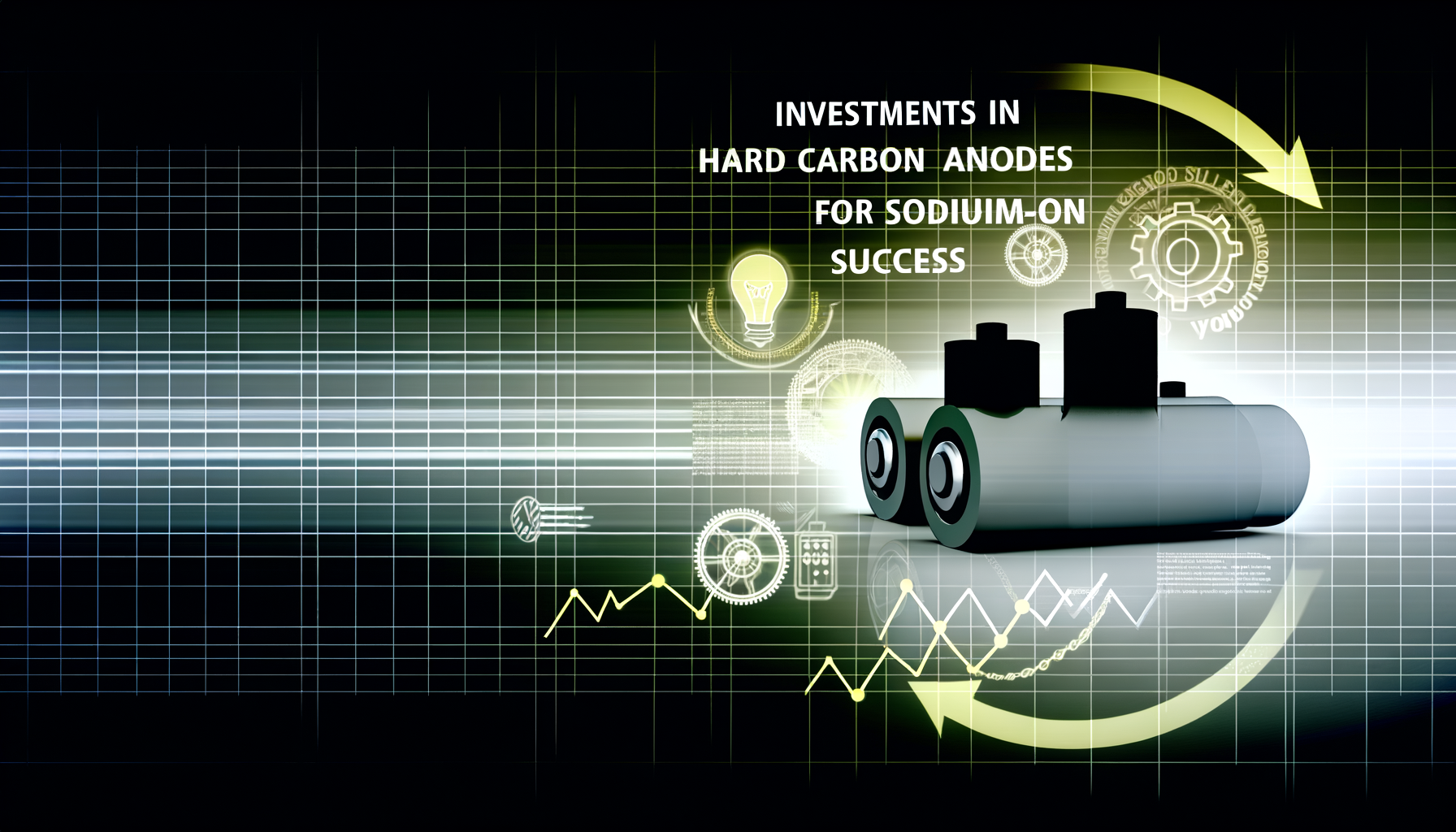In recent years, the energy storage sector has faced a growing demand for more efficient, sustainable, and scalable battery technologies. This demand is driven by the increasing proliferation of renewable energy sources, the rise in electric vehicle (EV) adoption, and the overall push towards a more sustainable future. Amidst this backdrop of change and evolution, sodium ion batteries (Na-ion) are gaining prominence as a viable alternative to the more established lithium-ion technology. At the heart of this potential lies a focus on hard carbon anodes—a critical component that promises to unlock the full potential of sodium-ion batteries.
The Shift to Sodium Ion Batteries
Sodium-ion batteries offer several advantages over their lithium counterparts. One of the most significant is the abundance of sodium, which is inexpensive and widely available, unlike lithium. However, for sodium-ion batteries to become a feasible replacement or alternative, addressing challenges related to energy density and performance is imperative. Here, hard carbon anodes come into play as a promising solution.
Why Hard Carbon?
Hard carbon, known for its excellent electrochemical properties, holds potential due to its high sodium-ion storage capability. Unlike traditional graphite anodes used for lithium-ion batteries, hard carbon anodes excel in their capacity to retain sodium ions without structural damage, thus enhancing battery life and performance.
Innovation Alert: Advanced hard carbon anodes stand to revolutionize sodium-ion batteries, offering comparable performance to current lithium-ion technologies and driving down costs through material availability and improved scalability.
Driving Research and Innovation Through Investment
Substantial investment in research and development (R&D) is fuelling this transformative potential of hard carbon anodes. Governments, educational institutions, and private enterprises are keenly aware of the pressing need to diversify energy storage options and reduce dependency on limited resources.
Key Areas of Increased Investment
-
Material Sourcing and Production Processes: Crafting effective hard carbons requires innovation in sourcing sustainable raw materials, like bio-waste, and refining production processes to enhance structure and performance.
-
Electrochemical Performance Optimization: Investments aim to boost the sodium-ion storage capacity of hard carbon and enhance energy density, prolonging battery lifespan.
-
Integration with Existing Tech: Merging hard carbon anodes with existing sodium-ion technologies and infrastructure is a critical research area, paving the way for practical commercial applications.
Innovations Stemming from Investments
Bio-Derived Sources
Researchers have demonstrated the potential of transforming biomass, such as agricultural waste, into high-performance hard carbon. This approach not only reduces waste but also provides an eco-friendly alternative to traditional carbon sources.
Advanced Nano-structuring
Nano-structuring techniques enhance the porosity and surface area of hard carbon, which improve ionic conductivity a key factor for enhancing charge-discharge rates.
Hybrid Anode Materials
Collaborations between research entities have led to the development of composite anodes. These hybrids combine hard carbon with other materials to fine-tune properties and achieve optimal performance.
Future Horizons: Commercialization and Scalability
As investment in hard carbon anodes grows, so too does the anticipation for their commercial deployment. While challenges remain, particularly in terms of scaling production processes and ensuring economic feasibility, the trajectory is positive.
Road to Commercialization
Increased collaboration between academia and industry is bridging the gap between laboratory success and market readiness, ensuring that sodium-ion batteries can soon power everything from consumer electronics to large-scale renewable energy grids.
Addressing Scalability Challenges
Researchers are exploring innovative methods to increase scalability while maintaining the quality of hard carbon. Scaling involves automating production processes and ensuring safety standards are upheld across large-scale manufacturing.
Economic Considerations
Stakeholders are evaluating the economic implications of wide-scale adoption. While initial barriers might include changes in infrastructure, the long-term benefits—energy independence, reduced costs, and environmental impact—offer enticing incentives for investment.
Conclusion: The Path Forward
The burgeoning field of sodium-ion batteries, with hard carbon anodes as a keystone technology, represents a holistic shift towards a sustainable energy future. As advancements continue to unfold, ongoing investment in innovative R&D is steering the world closer to realizing its green energy aspirations. Investors and researchers alike are uniting to harness this potential in pursuit of a more sustainable tomorrow.
Explore Comprehensive Market Analysis of Hard Carbon Anodes for Sodium Ion Batteries Market
SOURCE-- @360iResearch

